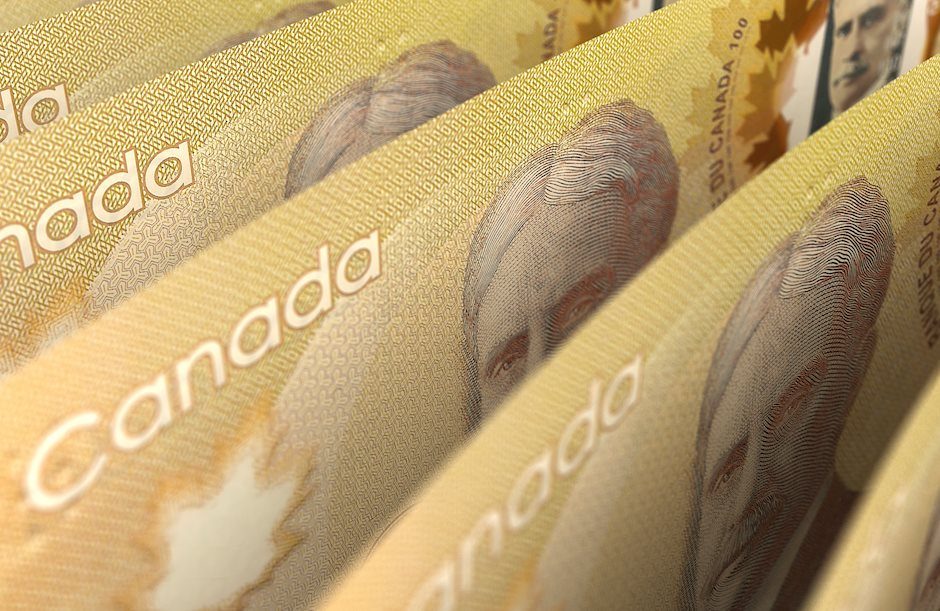USD/CAD falls toward 1.3750 due to higher Oil prices
- USD/CAD depreciates as commodity-linked CAD improves due to rising Oil prices.
- WTI Oil price edges higher due to supply threat amid escalated geopolitical tensions in the Middle East.
- The US Dollar may struggle due to dovish remarks from the Fed officials.

USD/CAD extends losses for the second consecutive day, trading around 1.3780 during the early European session on Wednesday. The Canadian Dollar (CAD) gains strength due to rising crude prices, as Canada is the largest Oil exporter to the United States. This increase in Oil prices puts pressure on the USD/CAD pair.
West Texas Intermediate (WTI) Oil price inches higher to near $82.80 per barrel at the time of writing. This upside could be attributed to the supply threat, which arises due to the geopolitical tensions persisting in the Middle East. Israel intensifies its operations in Gaza, prompting Palestinians to evacuate Khan Younis amid fears of further attacks. Israeli forces conducted airstrikes across the southern Gaza Strip on Tuesday, leading to widespread displacement among Palestinians.
The Canadian S&P Global Manufacturing PMI held steady at 49.3 in June, falling short of the market expectation of 50.2. This marks the 14th consecutive month of contraction. Traders will likely keep a close eye on the Canadian Unemployment Rate, set to be released on Friday, which is expected to increase to 6.3% in June.
The US Dollar (USD) could struggle due to Federal Reserve (Fed) Chair Jerome Powell’s somewhat dovish remarks on Tuesday. Powell said that the Fed is getting back on the disinflationary path. However, Powell wants to see further evidence before cutting interest rates as the US economy and the labor market remain strong, per Reuters.
Additionally, Chicago Federal Reserve Bank President Austan Goolsbee cautioned on Tuesday during an interview with CNBC, stating, "I see some warning signs that the real economy is weakening." Goolsbee further mentioned that progress toward the Fed's 2% inflation target could accelerate more swiftly than anticipated.
Canadian Dollar FAQs
The key factors driving the Canadian Dollar (CAD) are the level of interest rates set by the Bank of Canada (BoC), the price of Oil, Canada’s largest export, the health of its economy, inflation and the Trade Balance, which is the difference between the value of Canada’s exports versus its imports. Other factors include market sentiment – whether investors are taking on more risky assets (risk-on) or seeking safe-havens (risk-off) – with risk-on being CAD-positive. As its largest trading partner, the health of the US economy is also a key factor influencing the Canadian Dollar.
The Bank of Canada (BoC) has a significant influence on the Canadian Dollar by setting the level of interest rates that banks can lend to one another. This influences the level of interest rates for everyone. The main goal of the BoC is to maintain inflation at 1-3% by adjusting interest rates up or down. Relatively higher interest rates tend to be positive for the CAD. The Bank of Canada can also use quantitative easing and tightening to influence credit conditions, with the former CAD-negative and the latter CAD-positive.
The price of Oil is a key factor impacting the value of the Canadian Dollar. Petroleum is Canada’s biggest export, so Oil price tends to have an immediate impact on the CAD value. Generally, if Oil price rises CAD also goes up, as aggregate demand for the currency increases. The opposite is the case if the price of Oil falls. Higher Oil prices also tend to result in a greater likelihood of a positive Trade Balance, which is also supportive of the CAD.
While inflation had always traditionally been thought of as a negative factor for a currency since it lowers the value of money, the opposite has actually been the case in modern times with the relaxation of cross-border capital controls. Higher inflation tends to lead central banks to put up interest rates which attracts more capital inflows from global investors seeking a lucrative place to keep their money. This increases demand for the local currency, which in Canada’s case is the Canadian Dollar.
Macroeconomic data releases gauge the health of the economy and can have an impact on the Canadian Dollar. Indicators such as GDP, Manufacturing and Services PMIs, employment, and consumer sentiment surveys can all influence the direction of the CAD. A strong economy is good for the Canadian Dollar. Not only does it attract more foreign investment but it may encourage the Bank of Canada to put up interest rates, leading to a stronger currency. If economic data is weak, however, the CAD is likely to fall.
Author

Akhtar Faruqui
FXStreet
Akhtar Faruqui is a Forex Analyst based in New Delhi, India. With a keen eye for market trends and a passion for dissecting complex financial dynamics, he is dedicated to delivering accurate and insightful Forex news and analysis.
















